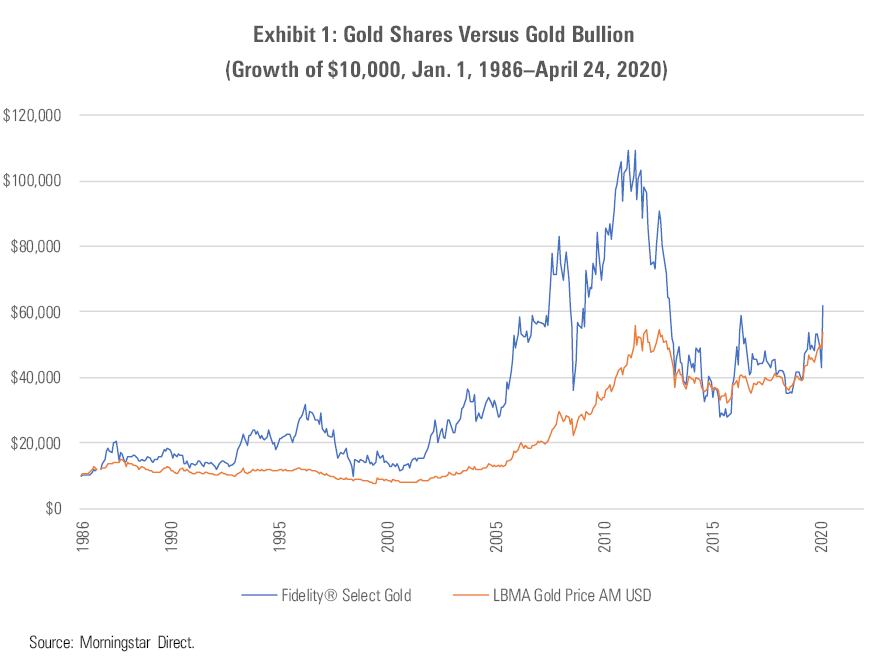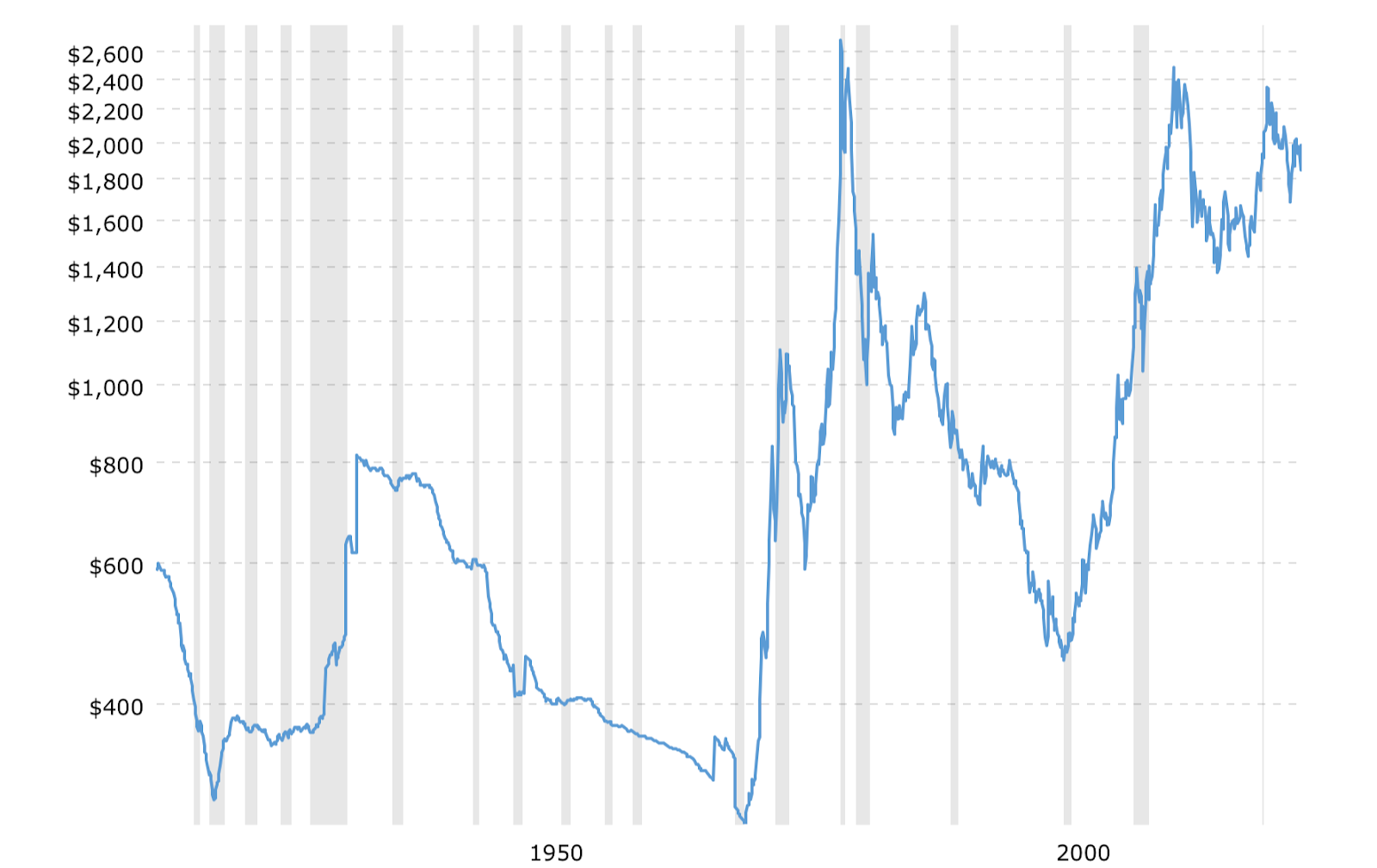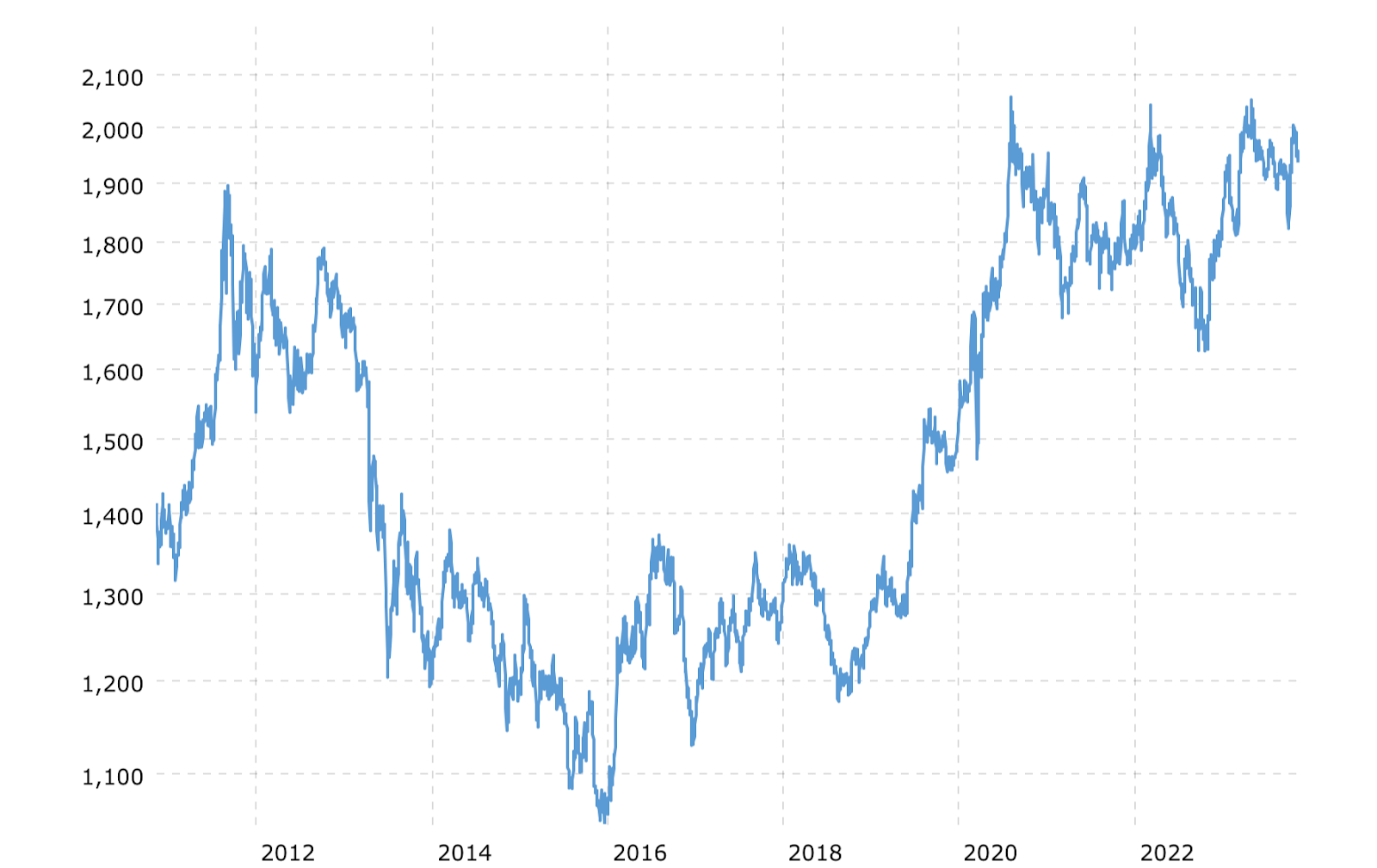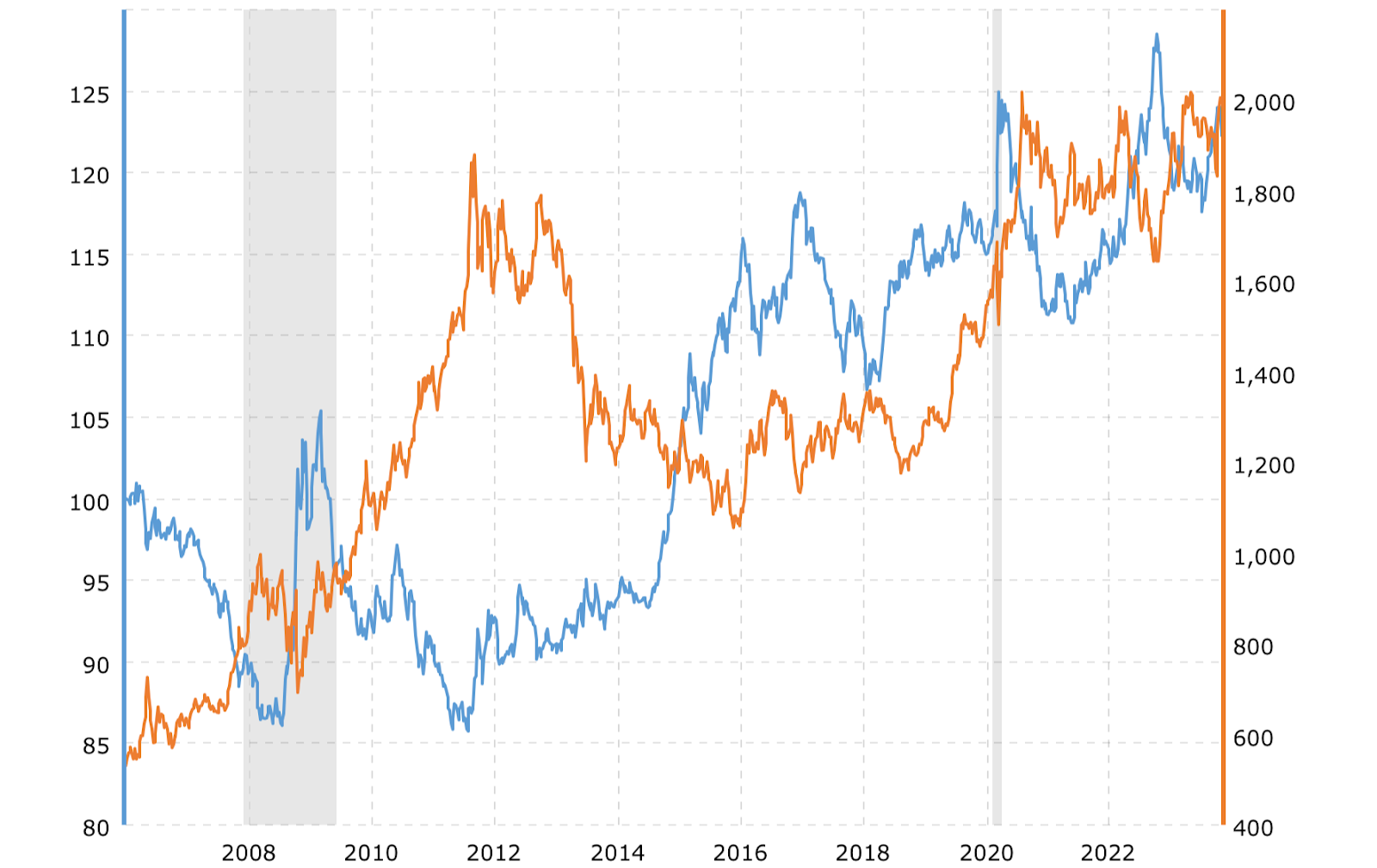Ah, yes. That timeless sheen. That glimmer of riches. The money of kings. Acceptable to all religions. It opens every palace gate without hesitation. It’s every man’s avarice, pursued with sweat, blood, and care thrown to the wind.
The allure of gold as an investment is just as much a reflection of our human nature as it is the face of the treasury keeper, the refiner, the miner, and the thief. It’s the ultimate store of value, not for its use, but for its perceived value and ubiquitous acceptance. And that hasn’t changed since the beginning of time.
Eastern European merchants made jewelry out of it 4000 years before Christ. Father Abraham was rich with the glittery metal around the 18th century BC. And we know that Egypt was swimming in it, capping the great pyramids with it, and lining the tombs of the pharoahs with it.
So what has changed about gold in modern times? Will Bitcoin change its perceived value? What’s the best way to invest in gold, gold bullion, and other precious metals? This guide will explore the world of gold investing and provide valuable insights into building a gold bullion portfolio.
The Basics of Gold Investing
Whether you’re completely new to gold investing or you’ve got a stash beneath the mattress, it’s beneficial to understand and consider why gold can be a good investment. Let’s dive into some terminology and reasons to consider buying gold.
What is gold bullion?
Gold bullion is the term used to refer to physical gold with a minimum purity of 99.5%. Bullion can come in the form of bars or coins. These are the most popular forms of physical gold to buy or sell, aside from jewelry.
- Gold bullion coins are usually created (minted) by federal governments. For that reason, they typically bear status as a form of legal tender. However, the spot price of gold can render the “face value” of the coin almost worthless in comparison. In other words, the gold content gives the coin its value, scarcity, and significance.
- Gold bullion bars are thick rectangular plates of refined gold, sometimes referred to as ingots. Bullion bars will usually range from a single gram up to 400 troy ounces. When minted, they are often stamped with weight, purity, and a serial number to help with identification.
Reasons to consider gold as an investment
From the mines of Egypt to the river beds of ancient Asia Minor, gold has held the intrigue of humans for millennia. Its mesmerizing hue comes from the Latin word aurum, which means “shining dawn”. It has for centuries been used in jewelry, coins, decorations, monuments, and other vessels.
One of the reasons gold is so popular is that it never corrodes. Ancient ruling classes found it a symbol of wealth, power, and perhaps even their lasting, eternal rule and authority.
But why choose gold today as an investment? Well, in short, nothing has changed about it. It’s still a highly valued, finite resource that continues to maintain a very high perceived value, both as an investment and a luxury.
Here are five reasons to consider owning physical gold:
- Gold has always held a high value that increases as fiat money declines in value.
- It is a liquid asset.
- Gold can help you diversify a portfolio with a stable, safe-haven investment.
- Mining for gold has declined in recent years, which may increase its scarcity.
- Increasing demand for gold as a hedge against the dollar has increased its value.
The differences between physical gold and other forms of gold investments
Physical gold can be tricky to store safely. It’s also harder to buy and sell than say a gold ETF. For that reason, many of the virtually traded gold products in the stock market have become popular alternatives to actually owning gold bullion.
Gold exchange-traded funds (ETFs) and gold trusts
Gold ETFs and Trusts are a popular and secure way of buying and selling gold without taking ownership of the physical metal. Like any other ETF in the stock market, gold ETFs allow you to invest in as much or as little gold as you want, buying and selling in a simple click of the mouse.
Here are 5 of the most popular gold exchange-traded funds:
- GLD - SPDR Gold Shares
- OUNZ - VanEck Merk Gold Trust
- AAAU - Goldman Sachs Physical Gold ETF
- GDX - VanEck Gold Miners ETF
- IAU - iShares Gold Trust
Of all these, the SPDR GLD is a the most liquid, by a long shot. However, it comes with a premium of 0.4% in annual expense. Some of the less liquid options carry lower rates for investing.
When considering which ETF or fund to invest in, you might consider how many shares are traded, how long you wish to invest, and whether or not you want to take physical delivery of the gold. For example, the VanEck Merk Gold Trust will allow you to do just that, take delivery of the actual gold based on the amount you have invested in the ETF. Most of the funds are backed by physical gold.
Understanding the Bullion Market
The bullion market is a large, global network of gold and silver buyers and sellers, ranging from the smallest of individual investors to government central banks and corporations. Within this trillion-dollar network, many players and stakeholders affect the price of gold.
Key players in the bullion market
Aside from individual central banks and multinational banks like JP Morgan, Goldman Sachs, and others, the London Bullion Market Association (LBMA) is another powerful player in the global bullion market.
The LMBA is responsible for ensuring that bullion products meet standards for fineness and quality as well as setting the rules for international gold and silver trading.
In addition to the LMBA, the ICE Benchmark Administration (IBA) sets the price of gold twice a day. This group consists of global banks, chair members, and an oversight committee who set the spot price and fixed price of gold each day. These prices are supposedly based on objective data from supply and demand with influence from the gold futures markets.
The role of bullion banks
Bullion banks play an important role in the world bullion market. Most of these banks are operated as separate arms of large multinational banks, usually as part of the commodities or foreign exchange branch of investment firms. They are responsible for a number of activities that may include the following:
- Risk management
- Physical metal distribution
- Trading and clearing
- Vaulting
- Intermediating and negotiating
- Financing miners and fabricators
- Market research
While that is not an exhaustive list, you can see that bullion banks play a big role in the bullion market. They are more often than not members of the LMBA and work together to maintain a healthy and secure gold market internationally.
Criticism of the bullion banking system
While the bullion banking system serves a purpose in maintaining a stable bullion market worldwide, it is not without its criticism. At the heart of this concern is that it’s a fractional reserve system. This is no different than our modern banking and monetary system in America.
Anyone who understands the fractional reserve system understands that money is often printed by banks on their balance sheets when they engage in lending, bringing “new money” out of thin air. The bullion banking system is no different, creating “paper gold” on banking balance sheets depending on the lending environment.
In other words, the gold that is currently circulating in the bullion banking system isn’t fully accounted for, or backed with, physical gold. This was a heated discussion on ‘Reddit during the GameStop squeeze as many lay investors also wanted to create a squeeze in the silver bullion market.
How to Build Your Gold Portfolio
Your first order of action in building your gold portfolio is to set your investment goals and risk tolerance. Identify the amount of gold in which you want to invest your net worth, and understand that the price of gold can fluctuate.
According to Kendall Little at MoneyWatch, most investors allocate “no more than around 5% to 10% of their portfolios to alternative assets like gold.”
This, of course, depends on your style of investing. If you’re an active trader by nature, you may allocate more than that depending on the foreseen move coming in the market. However, for the longer-term investor just looking for a safe-heaven to diversify into, 5%-10% may be a wiser move.
Little continues, “If diversification is your goal, you don’t necessarily need to dedicate a great portion of your holdings to gold.”
Diversification strategies with gold bullion
There are a number of ways to expose your portfolio to gold. As we’ve already mentioned above, you can buy physical bullion, jewelry, or an ETF. In addition, you can trade gold miners as individual stocks, and you can dabble in the gold futures markets as well. It all depends on your risk tolerance.
When diversifying, you should understand the underlying volatility of the asset you’re trading. For example, in an excellent piece on the comparison between bullion and equities, MorningStar charted the two to show the difference in volatility over many decades:

As you can see, equities often outpaced the gold spot price set by LBMA, and saw much more volatility during the same period.
Knowing this, it is best to balance your portfolio according to your risk appetite. John Rekenthaler has done research into just how much to balance your exposure across gold products to get the best bang for the buck. Here were his findings:
- If investing 10% in gold with a mainstream portfolio, use equities rather than bullion, because bullion lacks oomph. It is volatile by the standards of traditional investments but not enough to achieve the desired effect of diversification when used in a 10% dose.
- If investing 20% in gold, use bullion unless your risk tolerance is unusually high. Gold equities may lead to higher returns, but most will find the ride to be unduly bumpy.
Ways to Buy Gold Bullion
There are a number of purchasing options for gold bullion if you’ve decided to pull the trigger on owning physical gold. Take a look at these options and do your research before deciding from whom, and where to buy.
- Buying gold in person: Local dealers and pawn shops tend to have higher prices than online retailers as they are often juggling the premium they charge and trying to judge the direction of the spot price. They usually deal in smaller quantities as well. However, you do get to inspect the gold you buy.
- Pro tip: Explore at least 5-10 local dealers before you make a purchase, asking each what their price is, inventory, etc. Make sure they are reputable and willing to buy and sell on your terms.
- Buying gold online: Online gold dealers often deal directly with refineries and offer higher volume. Their prices are usually lower than local, smaller dealers, and they may offer a better customer service experience. However, you’ll likely pay more with shipping and insurance buying online.
- Craigslist and EBay: You can also buy from individuals using aggregate selling sites like Craigslist, Facebook Marketplace, or Craigslist. We would urge you to exercise caution before doing this and just be sure you are making the transaction in a safe place if meeting in person, like a police station parking lot, for example.
Evaluating the reliability of gold dealers
The best way to research the reliability of gold dealers is to look at their online reviews. Ask friends on Facebook. Check the Better Business Bureau and Rip-off Report. See how long they’ve been in business. Observe how clean and professional the office or store front looks.
We can’t stress enough the importance of researching many different dealers. You’ll gain a better idea of what the going rate for gold is and paint a clearer picture of the type of people you’re doing business with.
Don’t sell yourself short. Shop around!
Lastly, make sure you check the purity, form, size, and weight of your gold bullion. Your gold bars should at the very least be 99.5% pure gold. The size you buy is up to you. 1 ounce bars are usually a good size for smaller investments. Larger bars might be harder to liquidate down the road.
Storing and safeguarding physical gold
Storing your gold should be done in a proper safe. If storing at home, make sure the safe is secured to a foundation and not easily broken into. If storing with a custodian or safe-deposit box, be sure to research their terms for accessing your gold.
Analyzing Gold Market Trends

Historical gold has fluctuated considerably. However, in the past 10-20 years, the price of gold has shown signs of a tighter consolidation. Many gold bugs and investors believe that as fed continues to print, gold is poised for a breakout to new highs.
Gold Technical Analysis
Technically speaking, gold is making higher highs and higher lows in a multi-year consolidation. It’s what famous investor Bill O’Neil would call a cup-and-handle pattern. Here you can see the past 10 years of gold price:

Factors that influence gold prices
There are many different factors influencing gold prices. Most consider the value of the dollar to be most influential, but there are other factors at play:
- Central Bank Reserves
- Market Volatility
- Gold Production/Mining
- Jewelry Demand
Since the removal of the gold standard in 1971, many central banks have been buying gold in record numbers. In fact, in 2018, global central banks set a record fo the amount of gold buying.
This demand, in addition to bank and investor demand for a hedge against the dollar, can push the price of gold higher despite what normal market theory might predict for the shiny metal. For example, the futures market, ETF demand, or investor sentiment could drive the price of gold higher.
The impact of economic and geopolitical events on the gold market
While wars and rumors of wars abound, the imminent demise of the dollar, inflation, and other unpredictable catastrophes loom on the horizon, gold is often seen as a beneficiary of these bad times.
Here is a chart showing the correlation of gold to the value of the dollar. As you can see, when he dollar goes down, gold more often than not goes up:

How to interpret and predict gold market trends
As famous investor Gil Morales likes to say, it’s best to buy gold when no one wants it. Gil is a long term holder of gold, but bought it back when the metal was at much lower prices. In addition to his physical holdings, he swing trades gold ETFs, miners, and equities.
One of the best strategies to buy gold is on pullbacks to the moving averages, or use what Gil calls an undercut and rally move. The undercut and rally is similar to Wyckoff’s “spring” — buying an equity when it rebounds and reclaims a prior area of support/resistance, using the most recent lows as a place of risk management.
The Future of Gold Investing
Some emerging trends in the gold market include the potential for blockchain technology to intersect with physical gold to produce a safe-heaven “digital gold” product. Some bullion banks like HSBC have recently launched platforms using blockchains to allow clients to track gold ownership with the bank.
Whether moving to a blockchain for safe storage, or owning your own gold bullion, many experts say that if you can’t touch you don’t own it. We’ll leave that up to you to decide.
Conclusion
Regardless of how you buy gold, whether through a local dealer, online, through your brokerage as an ETF, a trust, in an IRA, or through blockchain, gold can be a good investment for diversification. It has always been a safe store of value throughout history.
Just be sure to do your research, no matter what path you take to ownership. Define your goals, set your risk, and determine your investing strategy.
As always, consult your financial advisor before making investment decisions.






 Commodity Futures
Commodity Futures 
